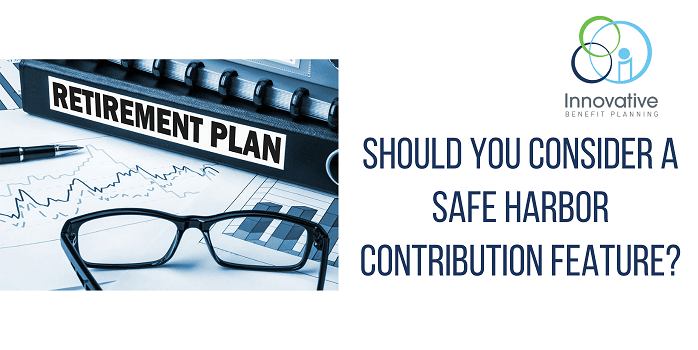Should you Consider a Safe Harbor Contribution Feature?

Does your organization’s retirement plan frequently refund money to highly compensated employees (HCE)? Do you want to provide a great incentive to your employees to save for retirement and perhaps allow them to retire earlier? Would the owners and highly compensated employees like to save more of their own money? Do your key employees own a significant portion of plan assets? These are among the common reasons a company might implement a Safe Harbor contribution feature for their retirement plan.
If a company agrees to make a Safe Harbor contribution to their retirement plan, then the plan is exempt from nondiscrimination testing for the plan year. These include: Average Deferral Percentage tests, Average Contribution Percentage tests, and Top Heavy tests. Depending on your company, it might be wise, for several reasons, to avoid these tests and the actions required from failing them.
There are several contribution calculation methods that qualify for Safe Harbor protection:
- 3% of compensation contribution to all eligible employees.
- Match 100% of a participant contribution up to 3% of their salary and match 50% of their contribution up to 5% of their compensation.
- Match 100% of a participant contribution up to 4% of their compensation.
- A Qualified Automatic Contribution Arrangement (QACA), which has the following requirements:
- Match 100% of a participant contribution up to 1% of their compensation and match 50% of their contribution from 1% to 6% of their compensation.
-
Implement an Automatic Enrollment feature with an initial deferral rate of at least 3% and an Automatic Increase feature that automatically increases deferrals by at least 1% until a maximum of between 6% and 10% is reached.
- QACA safe harbor contributions can have a 2-year cliff vesting schedule (other safe harbor options vest immediately).
Regardless of the safe harbor solution, participants win. The company has agreed to give them additional money when they might not have otherwise. What a great recruiting tool! But, how does the company win besides happier employees?
There are several instances where a safe harbor match is a great solution for a plan sponsor:
- A “top-heavy” plan is one where the key employees (different than HCEs) own over 60% of plan assets. A non-safe harbor plan must contribute 3% to all non-key employees. This includes HCEs and non-contributing employees. Look at the math. What is the estimated cost to the company if either of the match settings described above are used? Do the math. Compare that to the cost of the current match levels.
- Some companies believe they have a generous match, but seem to still fail testing and issue refunds. What would it cost to change your existing match to a safe harbor match?
- We have seen companies where they take a paternalistic view. They want to ensure all employees have something being saved for retirement. The 3% contribution to all eligible employees does that, as well as provide the protections for safe harbor.
Any of these solutions allow for owners, their employee family members, and other highly compensated employees to contribute the statutory maximum allowed each year. A good financial advisor will be able to run various scenarios for you.
Innovative Investment Fiduciaries is an RIA that advises on over 50 retirement plans throughout the country. We specialize in advising on complex plans that require a high level of due diligence and attention to detail. If you have any questions about your plan and whether you should hire an advisor, contact Innovative here.
Categories
Archive








